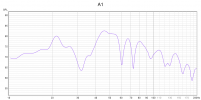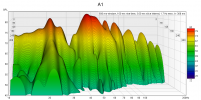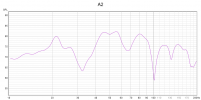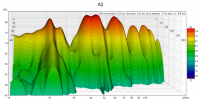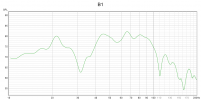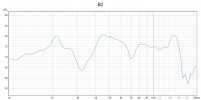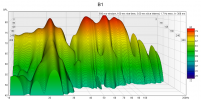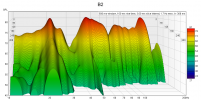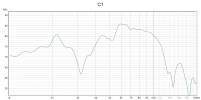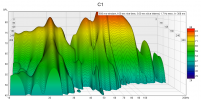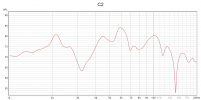D
Deleted member 58670
Guest
I'd like to start a new thread about this and show my own results with it. The DBA concept was described more than 20 years ago, and there's even a short Wikipedia article about it here:
 en.wikipedia.org
en.wikipedia.org
The idea is to create a plane wave from the front end of the room by using an array of subwoofers. This array must consist of at least four subwoofers. The plane wave created by the array will cancel out standing wave modes in the width and height of the room. To cancel the remaining modes in the length axis of the room, there is an array at the rear end of the room where the signal must be inverted, delayed and attenuated.
It's also possible to use passive absorption at the rear end. This is called a Single Bass Array (SBA). I've heard an SBA, but not measured it. It seems to have most of the benefits of a DBA.
My room is 5 by 7 meters. I have a cathedral ceiling with an average height of 3 meters.
The front and rear arrays are of course identical, and consists of twelve Seas L26ROY subwoofers in 35 liter closed boxes. The layout is like this:

Measurements will follow.
Double bass array - Wikipedia
The idea is to create a plane wave from the front end of the room by using an array of subwoofers. This array must consist of at least four subwoofers. The plane wave created by the array will cancel out standing wave modes in the width and height of the room. To cancel the remaining modes in the length axis of the room, there is an array at the rear end of the room where the signal must be inverted, delayed and attenuated.
It's also possible to use passive absorption at the rear end. This is called a Single Bass Array (SBA). I've heard an SBA, but not measured it. It seems to have most of the benefits of a DBA.
My room is 5 by 7 meters. I have a cathedral ceiling with an average height of 3 meters.
The front and rear arrays are of course identical, and consists of twelve Seas L26ROY subwoofers in 35 liter closed boxes. The layout is like this:
Measurements will follow.
Last edited by a moderator:
